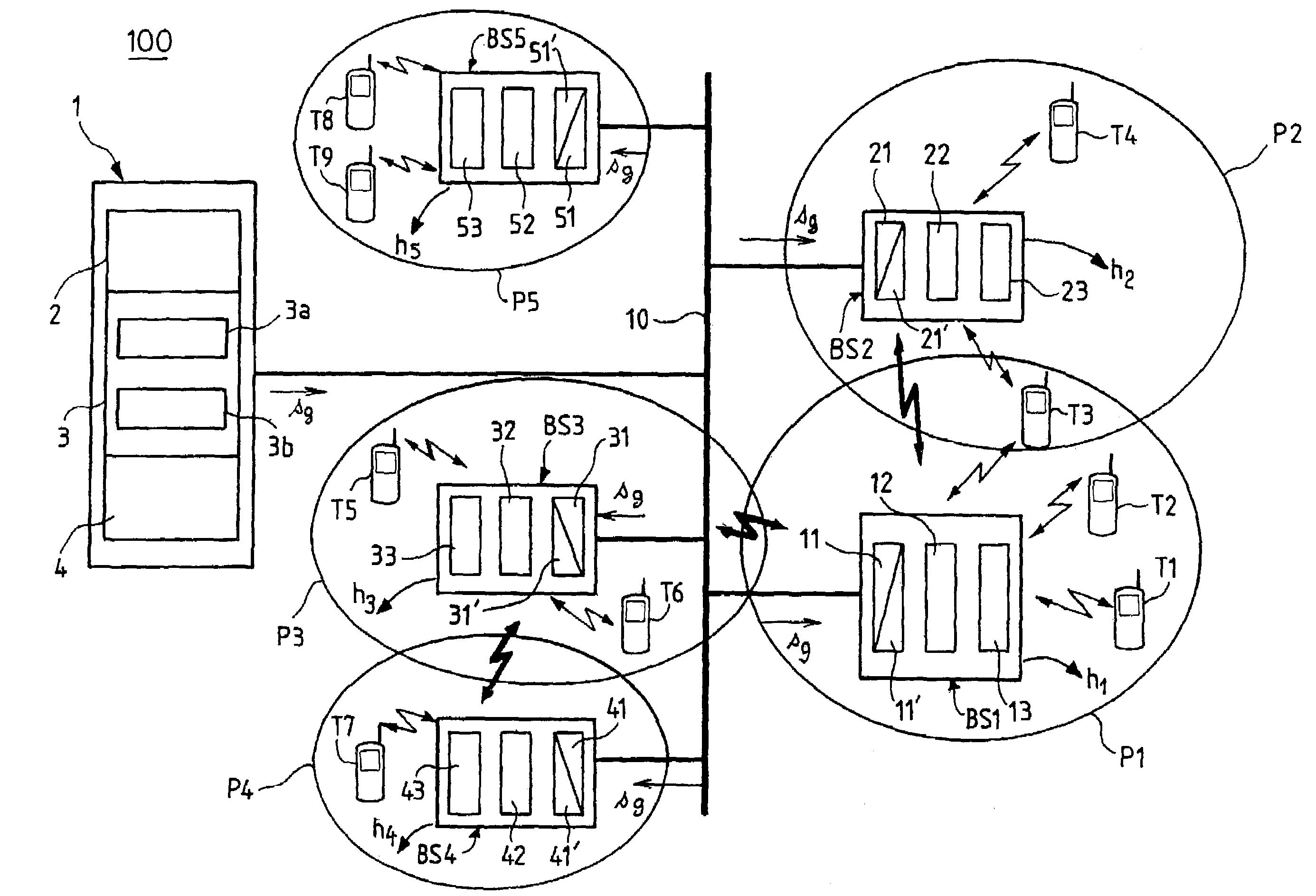Method of synchronizing base stations interconnected by a local area network
- Summary
- Abstract
- Description
- Claims
- Application Information
AI Technical Summary
Benefits of technology
Problems solved by technology
Method used
Image
Examples
Embodiment Construction
[0024]In this preferred embodiment of the invention, four of the base stations BS1 to BS4 have picocells connected to each other, each picocell of a base station overlapping at least one other picocell of an adjoining base station. DECT mobile terminals of the system 100, such as mobile telephones T1 to T7, are able to move around in the picocells P1 to P4 covered by that group of base stations. Thus the invention can execute a handover as soon as the system 100 is initialized.
[0025]Conversely, the fifth base station BS5 covers an isolated picocell P5 that functions independently of the others.
[0026]The system 100 includes a synchronization server 1 including:[0027]means 2 for storing the topology of the system 100, and[0028]a coarse synchronization module 3 including:[0029]means 3a for generating IP messages to be transmitted via the local area network to the base stations in particular,[0030]means 3b for hierarchically organizing the grouped base stations BS1 to BS4, and[0031]mean...
PUM
 Login to View More
Login to View More Abstract
Description
Claims
Application Information
 Login to View More
Login to View More - R&D
- Intellectual Property
- Life Sciences
- Materials
- Tech Scout
- Unparalleled Data Quality
- Higher Quality Content
- 60% Fewer Hallucinations
Browse by: Latest US Patents, China's latest patents, Technical Efficacy Thesaurus, Application Domain, Technology Topic, Popular Technical Reports.
© 2025 PatSnap. All rights reserved.Legal|Privacy policy|Modern Slavery Act Transparency Statement|Sitemap|About US| Contact US: help@patsnap.com


